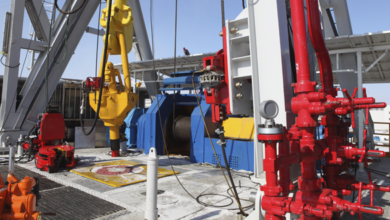Drilling Ahead: Crystal-clear focus on asset integrity, reliability
By Mike Killalea, Editor & Publisher
Asset integrity and reliability are hardly new concepts, but today they are more important than ever before.
“Asset integrity and reliability is the most fundamental and possibly the most challenging aspect of our business today,” IADC Chairman Jay Minmier said in the featured address to the 2014 IADC Asset Integrity and Reliability Conference.
He added, “It’s our responsibility to control risks related to asset integrity. These days, however, regulators at all levels are peering intently over our shoulders.” (Scan code below for complete speech.)
So what are asset integrity and reliability? The Twitter definition for asset integrity is ensuring that major structures are robust and properly corralling hydrocarbons in the formation, wellbore, pipelines, storage tanks and so on. Reliability simply means that we can count on equipment and systems to perform correctly when needed.
Are we under-delivering?
Simple concepts, but challenging to realize. As recently as March, PSA Norway, the Norwegian regulator, observed in its final Macondo report that industry has promised much but delivered little toward improved well control. The latest US Chemical Safety Board report on Macondo focused on the unreliability of well control equipment. And both Norway and the UK have said that industry is not meeting its targets in managing asset integrity- and reliability-related risks for safety-critical equipment.
Rocks and hard places
Unfortunately, this all drops in our lap at a time when we face new hazards and pressures both on land and offshore. We work to improve productive time, for instance, which forces more frequent equipment cycling, which increase wear and tear. So we are between a rock and a hard place.
“Operators demand that costs be lowered,” Mr Minmier said. “But at the same time, our equipment and systems are being tested to the limit, and sometimes beyond.”
Power in numbers
I read that in 2011 the number of automobiles worldwide topped 1 billion. Probably only a few hundred BOPs exist. Ensuring reliability becomes that much tougher when limited to such a small population.
“Building reliable equipment for drilling is less straightforward than industry sectors where market volumes can absorb a large number of prototypes to remedy patent defects,” the IADC Chairman said.
“There is power in numbers.”
Human factors
It’s not only equipment, either. It’s people. Doesn’t it always bottom-line to people?
IADC’s competency program, the Knowledge, Skills and Abilities (KSAs: www.IADC.org/KSA) is tackling the human factors side, identifying maintenance procedures and proper operation of specific equipment.
“This differentiated approach to competency is vital,” Mr Minmier confirmed.
Mike Killalea can be reached via email at mike.killalea@iadc.org.
Click here to access a free eBook by IADC and IRF, “Asset Integrity: Regulatory Perspectives.”
Click here to access Jay Minmier’s complete featured address to the 2014 IADC Asset Integrity & Reliability Conference.



